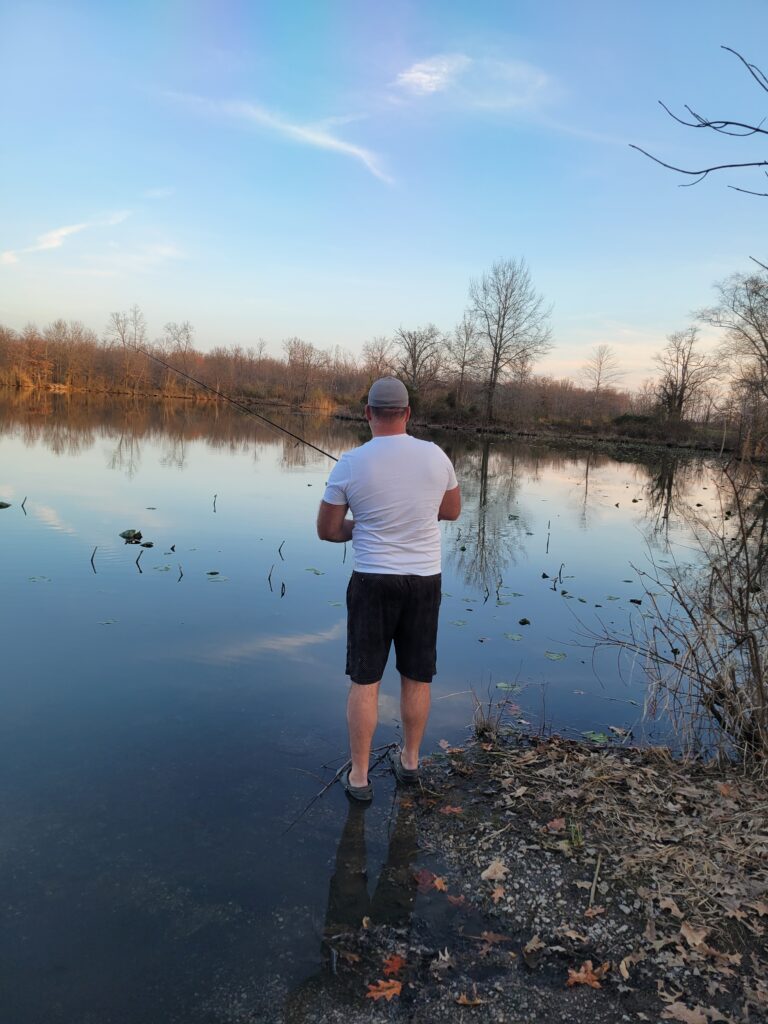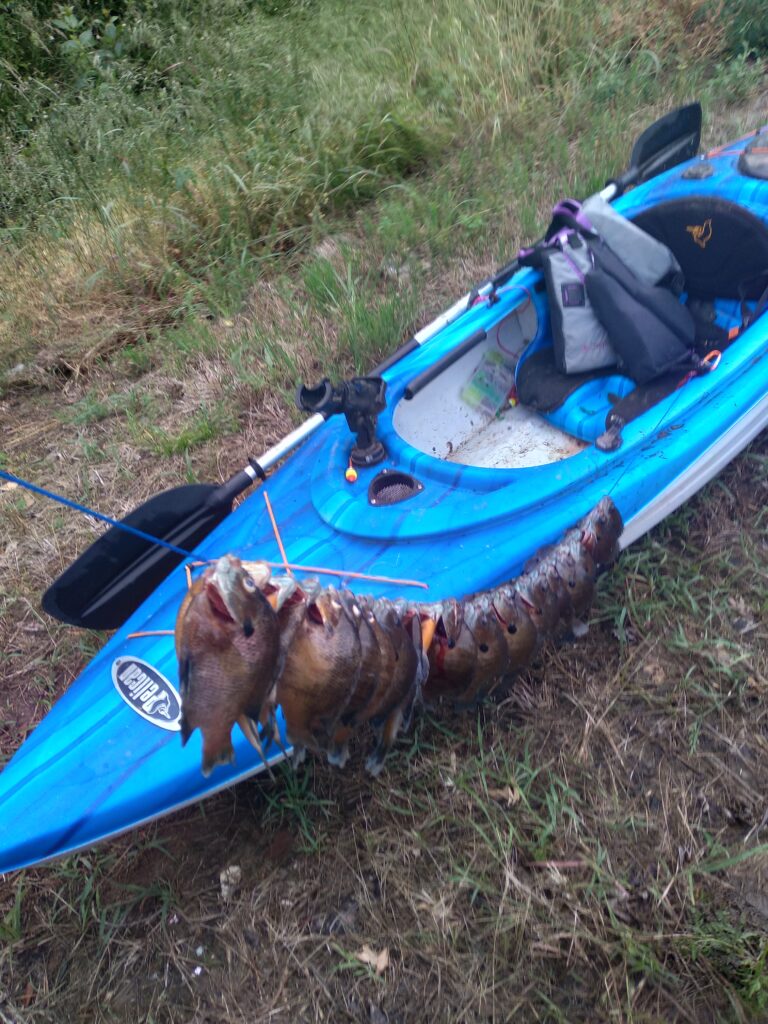Bluegill
How To Catch Bluegill In Lilly Pads
Lily Pads Are An Excellent Location To Find And Catch Bluegill
One of my first experiences fishing with my grandfather and father involve pushing an old aluminum V-style boat off a boat ramp and paddling up to lily pads on Harrisburg Lake just east of Galatia Illinois.
With their long thick stems getting tied up inside a trolling motor’s blades, paddling was the easiest way to go about it without disturbing the inhabiting fish.
We would paddle towards the lily’s edge and give one good push to glide into the prime catching areas, where we would drop anchor and go to town, catching large bluegill who were in their either feeding on insects, or starting to bed up.
While not every single area we anchored at was primed with fish, most did yield a few fish as they moved in and out. Since the good ole days, I have developed a love hate relationship with the little green discs. They’re almost guaranteed to hold fish at some point throughout a day but hang ups can really start to get the best of you.
Incorporate a few tips I’ve developed and get to catching more bluegill!
Why Do Some Lakes Contain Lily Pads?
Lily pads are a beautiful addition to lakes as long as they’re there in moderation. It is quite possible for a fertile rich lake to develop growth so thick that it’s virtually impossible to get near the bank to fish, or worse, fish from the bank!
Where they’ve spread to, lily pads will inhabit water in the four feet to less depths. If a lake is known to be consistently shallow around the banks and are well protected from high winds, then they have a perfect environment to spread via seed and root systems.
Why Bluegill Love Hiding In Lily Pads
Lily pads provide bluegill everything they need to thrive in a lake. From sunrise to sundown, you can sit in the middle of them and listen to fish moving around and see them bumping up against stems causing the pad to move around.
Food source is the primary reason why bluegill can be caught in lily pads. Insects, plankton, and small water bugs at the bottom of the food chain have everything they need to thrive under the small discs and it’s like ringing the dinner bell for an all you can eat buffet.
Protection from predators is another reason bream will hold up inside the pads. Bass fishermen also lick their chops when they approach an area filled with lily pads as the fish use them to hide from unsuspecting bluegill.
With its smaller size advantage, upon being chased, a bream can often times outmaneuver the bass in the thicker areas where stems grow close together.
How To Catch Bluegill From Lily Pads
As mentioned above, water lilies provide excellent protection from predators including fishermen. Once stems start crisscrossing there will come a point where you just simply can’t fish them.
Use the following tips to better increase your odds of success:
Fish closest to the pockets when possible
Pockets will be the location chosen by bluegill to spawn as long as the area isn’t too overgrown. When visiting a lake, check out google maps for any indentions that would provide the most protection from the wind, even if the lilies didn’t occupy the lake.
Fish With The Smallest Hooks You Can Get Away With
Frustration can quickly set in once the first few hooks snag a lily pad’s stem system. They’re unforgiving and will lead to many breakoffs, or wet arms when you have to pull up anchor and go retrieve your rig. Smaller hooks with less gaps will cut down on this. We use the Shelton’s Bluegill Bug due to its small hook profile.
Fish Them Before The Pads Actually Develop
In March, lily pads usually take up the profile of just stems before the actual pad develops. The pad itself will be what prevents you from fishing most of the area so if you can take advantage before this time, you’ll be able to catch a good mess of fish as they’ll still be in there feeding up before the spawn begins.
Use A Pole Instead Of A Rod & Reel
When choosing between a pole and a rod & reel, lily pads create a scenario where you’re better off using something more accurate like a cane pole. Poles prevent you from making longer casts which will increase the likelihood of you getting snagged up.
When you catch a fish it’s more likely you’ll be able to lift a bluegill straight up and land it as opposed to fighting the fish allowing it to wrap you up in the vegetation as well.
Lastly, a pole provides a quieter landing on the surface. Lily pads grow in shallow water so the fish can be more easily disturbed. A pole provides a light landing for your bobber and rig.
Conclusion
Lily pads are an amazing cover for bluegill. It’s hard to overstate how excited I get when I approach an are containing them. While they do provide some frustrating moments I will take them over a standing timber any day.
From my experience, a rich fertile lake with abundant aquatic plant life usually indicates a very good balanced bluegill population!




